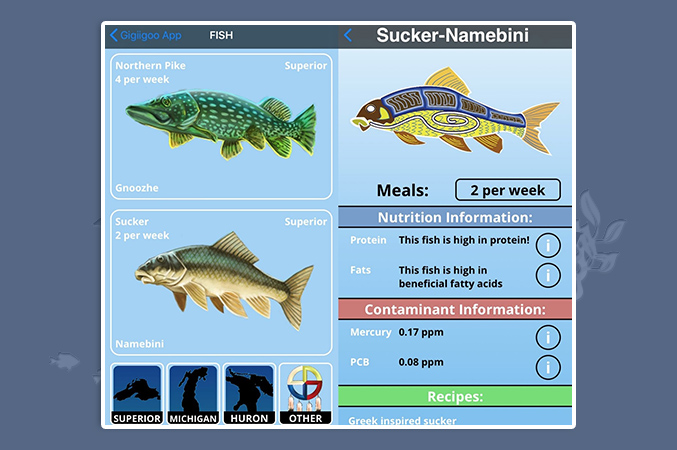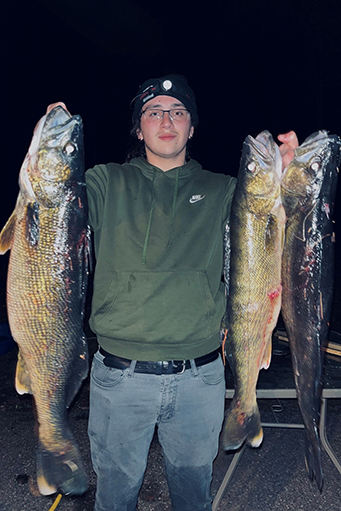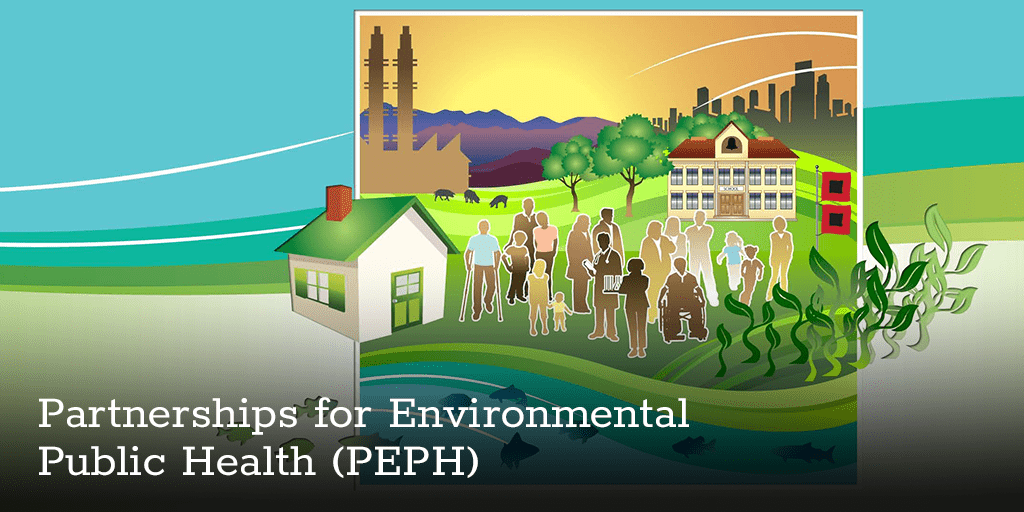“Ojibwe Fisherman” by Roland W. Reed, 1908, demonstrates the cultural history of fishing in the community. (Photo courtesy of Matthew Dellinger)
A phone app for reducing exposure to harmful contaminants from fish consumption was developed for the Anishinaabe (Ojibwe and associated Great Lakes Tribes). It is called Gigiigoo’inaan, which means “our fish” in the Ojibwe language. Phone apps and online environmental health literacy resources can be effective ways to reach community members with important health information.
The culturally relevant app was designed and developed by researchers at the Medical College of Wisconsin who worked with the Chippewa Ottawa Resource Authority (CORA), the Great Lakes Inter-Tribal Council, and the Inter-Tribal Council of Michigan. The research team also tested whether the app was successful at increasing environmental health literacy about fish consumption. This work is described in a September 2022 paper.
“Fishing and fish consumption are important parts of minobimaadiziiwin — or ‘living in a good way,’” stated Amy Poupart, program director for the Great Lakes Native American Research Center for Health. “Restrictive fish consumption advisories are disruptive to our traditions and lifeways. However, there is ongoing work in the community to reduce environmental contaminants, and environmental health literacy interventions, such as ours, complement these efforts.”
Tailoring Recommendations to the Anishinaabe Community
Community members informed the app’s features and content. For example, Gigiigoo’inaan includes Ojibwe names for fish and incorporates traditional artwork. Previous papers describe the app’s development and design, focus group results that informed development, and methods to determine recommended fish consumption.
The app is intended to increase environmental health literacy by including information on recommended consumption amounts of different types of fish. The recommendations are based on CORA’s sampling data for contaminants found in various types of fish. The app also allows for personalization by the user, such as body weight and sex, which allows the user to calculate the maximum fish consumption that is within regulatory limits of contaminants set by government agencies. Additionally, the app shows whether a fish provides healthy fatty acids and how many times the fish may be consumed per week based on the risk of contaminant exposure.

A screen shot of the Gigiioo’inaan app shows an example of the nutrition recommendations and contaminant information for a fish, as well as the corresponding images and artwork. (Photo courtesy of Matthew Dellinger)
“Our team developed this app over several years, incorporating community engaged, culturally appropriate data that truly makes this app unique to the Anishinaabe,” stated Matthew Dellinger, Ph.D., lead investigator of the NIEHS-funded study and co-investigator at the Great Lakes Native American Research Center for Health. “An important part of environmental health literacy is access to information, so the app format, which can be accessed on a smartphone or online on another device, is easily accessible to most people. But providing information tailored to the community is also critical. The Gigiigoo’inaan app meets this goal.”
Fish Consumption App Tested in the Community
The Inter-Tribal Council of Michigan recruited Tribal members to participate in the study through inter-Tribal consortia agreements. The researchers used an experimental study design in which 130 participants had access to Gigiigoo’inaan after researchers determined typical fish consumption before using the app. An additional 136 participants in a control group did not use the app. All participants received compensation for their participation.
The study took place over eight weeks during the Great Lakes winter ice fishing season, when residents typically consume a lot of fish. Throughout this time, researchers sent weekly surveys to participants prompting them to self-report the amount of each type of fish they consumed. Using CORA’s sampling data on contaminant levels in fish, researchers estimated contaminant consumption based on the self-reported data. Researchers also estimated omega-3 fatty acid consumption.

Amy Poupart’s son, Tristain Poupart, and his spring 2022 spearfishing harvest of three large walleye. (Photo courtesy of Amy Poupart)
Interestingly, researchers did not find statistically significant differences between the contaminants consumed by participants using the app and those who did not use the app. Few participants in both the control and app arms of the study exceeded regulatory limits, but encouragingly, the researchers found that most participants were consuming recommended intakes of omega-3 fatty acids, indicating that minobimaadiziiwin and traditional fishing practices promote healthy eating habits. Additionally, app users found Gigiigoo’inaan to be engaging, useful, and culturally appropriate.
“While we did not see large differences in contaminant exposure or fish consumption between the app users and those that did not use the app, we don’t find these results discouraging,” reflected Dellinger. “Quite the opposite. These results show that Anishinaabe community engagement efforts may be encouraging healthy fish consumption behaviors by getting the word out about fish advisories while promoting minobimaadiziiwin, which in turn encourages more fishing and hunting. The main effect we found was a self-reported increase in confidence that fish could be safely consumed by favoring lower contaminant species and limiting others.”
Dellinger provided the example of walleye, a fish species important to the community. Previous advice has flagged large walleye as dangerously high in contaminants, but Gigiigoo’inaan provides a personalized recommendation that increases confidence in safe consumption of that fish without exceeding advisory limits.
In the future, the researchers will look to expand their understanding of how cultural concepts of health and wellness interact with environmental health literacy to promote healthy, exposure-reducing, behaviors. The study is currently in its final phase to assess long-term app use and sustained improvement in environmental health literacy.
Source link
www.niehs.nih.gov

